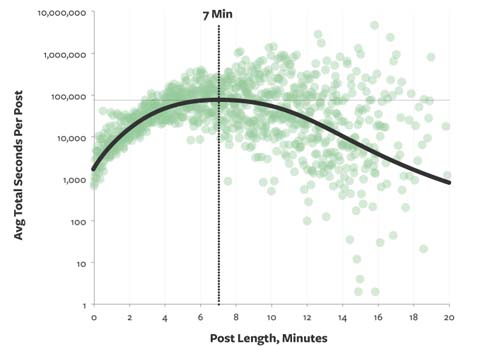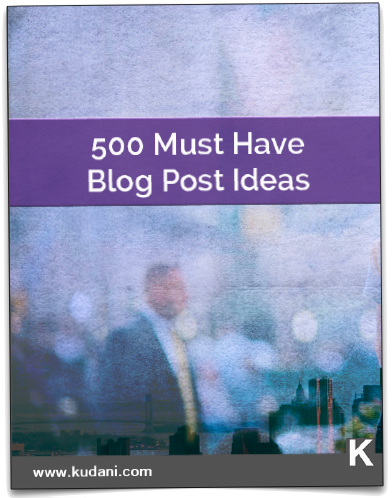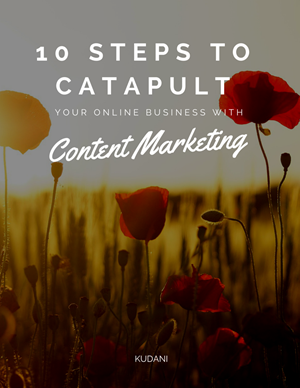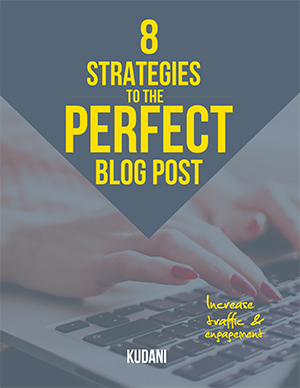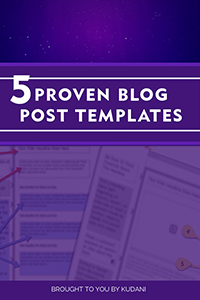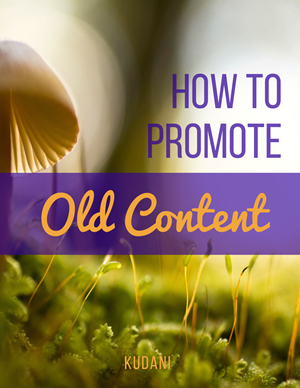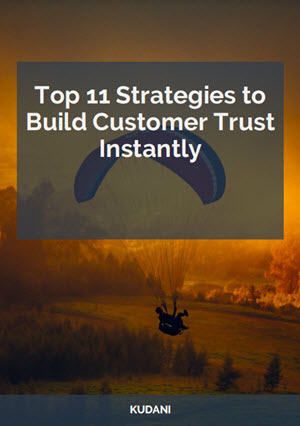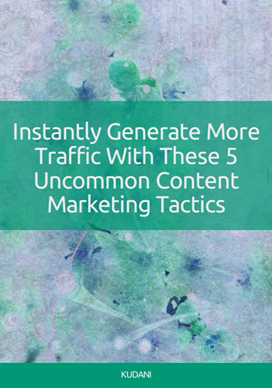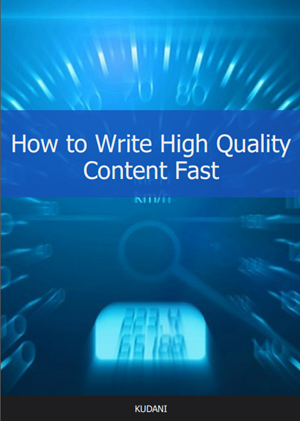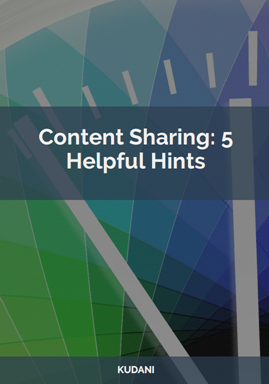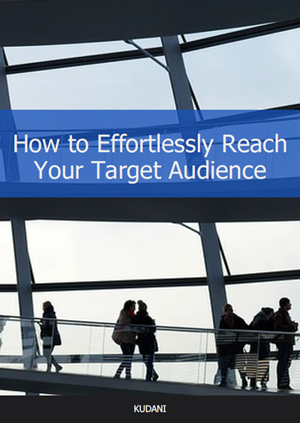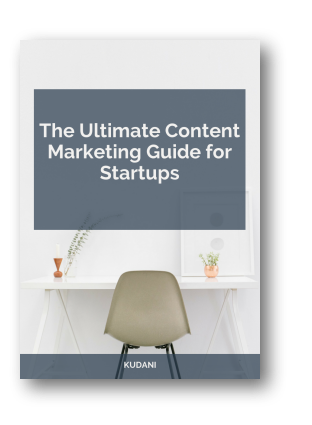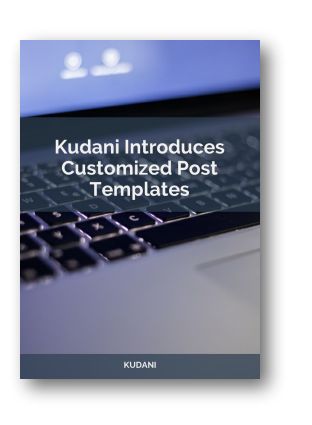Eight Strategies to the Perfect Blog Post
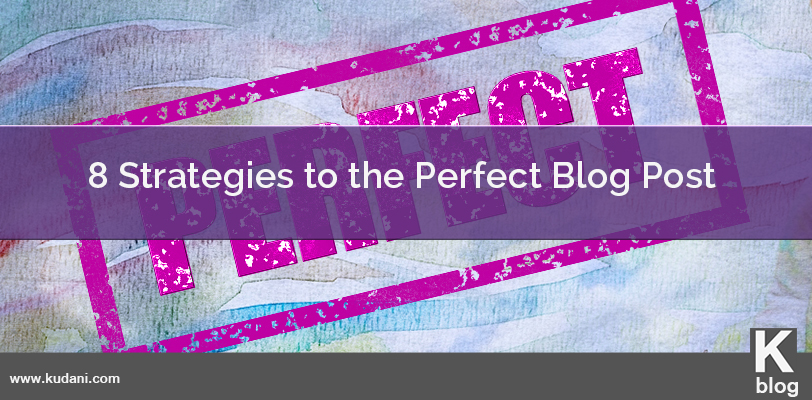
Ever wonder why some blog posts get all the traffic and engagement? Is there a secret formula or are they just lucky?
Well possibly a little bit of both. But certainly there are some great guidelines and practices for creating a perfect blog post.
Here are 8 strategies that have proven to deliver results, increase followers, and position yourself as an authority.
1. Know Your Audience
Whenever you are writing a blog post you need to first begin with understanding your audience. Who are your readers? What do they want to know? What are their problems? The more you know the better you can deliver.
The needs of your audience should come first.
You need to be able to empathize with your readers. Be able to step into their shoes.
Here’s what Isla McKetta, from Moz, had to say about it…
We talk a lot about empathy at Moz, and that’s because the value of empathy cannot be overstated — in marketing or in life. Empathy is a super power. Dr. Brené Brown describes that super power as “feeling with people,” and it creates a spark of connection for the person being empathized with. That spark can be fanned into the burning passion of a long-lasting relationship — in business and in life.
To understand how to empathize with your customer, first create personas. Find out where your audience is emotionally. Figure out what they’re insecure about, what scares them, what they most need in the moment that they’re visiting your site. It’s not rocket science to understand that a new mom might be feeling insecure about nursing her child in public, and if that’s what your product is designed to help her with… go that extra mile to connect.
Ways to reach into your customer’s soul and speak to their needs include:
- A car insurance company that caters to the accident prone starting their rate page with copy that assures the customer the company will be there no matter what happens.
- Creating an ROI calculator after uncovering that your customer needs your software to generate client reports, sure, but she also needs to be able to show her boss the value she’s adding to the company with her daily work.
- Understanding that everyone’s time is limited, ask the most essential survey question first and then give your customer the chance to expound if he wants to. Like Sears does at the bottom of their two-question satisfaction survey:

2. Identify Your Topic and Write a Working Title
Before you even write anything, you need to pick a topic for your blog post. The topic can be pretty general to start with. For example, if you’re a plumber, you might start out thinking you want to write about leaky faucets. Then you might come up with a few different working titles — in other words, iterations or different ways of approaching that topic to help you focus your writing. For example, you might decide to narrow your topic to “Tools for Fixing Leaky Faucets” or “Common Causes of Leaky Faucets.” A working title is specific and will guide your post so you can start writing.
Let’s take a real post as an example: “How to Choose a Solid Topic for Your Next Blog Post.” Appropriate, right? The topic, in this case, was probably simply “blogging.” Then the working title may have been something like, “The Process for Selecting a Blog Post Topic.” And the final title ended up being “How to Choose a Solid Topic for Your Next Blog Post.”
See that evolution from topic, to working title, to final title? Even though the working title may not end up being the final title, it still provides enough information so you can focus your blog post on something more specific than a generic, overwhelming topic.
The topic should resonate with your audience. So again, I want to stress the importance of understanding their needs. When creating the buyer persona you should identify their main problem areas. Your blog articles then need to find solutions. So make sure that your topic corresponds with their problems.
Additionally, have a few working titles that cover the main subject matter. Then take each of those and write 5 or more headlines that will capture your audience while at the same time explaining what the article is about.
3. Each Headline/Post Should Address a Single Evergreen Problem
Keeping in line with the previous point, I want to stress the importance of problem solving. When you are choosing your topic think about a single problem and build your post from that.
Ramsay at BlogTyrant says that you should break down your blog posts and just focus on one smaller topic.
Here is an example he gives…
A post about ‘How to Be Awesome at Karate’ might actually be better as a dozen posts made up of smaller topics like ‘How to Throw the Perfect Karate Punch’ or ‘How to Make a Fist in Karate’.
Get the idea?
As you are surfing the net start looking at how others are doing this. Google some of your favourite topics or take a look at some of your competitors. What are they doing? How are they covering larger topics? Take a look at the headings and how those are directly tied into a larger topic.
“Over the years I’ve noticed that articles that focus in on one problem such as ‘How to Sell a Blog’ or ‘How to Start a Fashion Blog’ seem to do the best because they solve very narrow problems and these problems never really go out of fashion” says Ramsay.
Download a Copy of Eight Strategies to the Perfect Blog Post
4. Subheads, Subheads, and More Subheads
Why you might ask?
Because most people quickly scan through the article and just read the subheadings and if they are in bold they may gravitate to that one a little more. The main point here is that you want to grab someone’s attention as they are skim reading your page and subheads are the trick for that.
Buffer recommends:
Use subheads to make your post scannable. Subheads are the heading tags that appear inside your post editor. They might be represented as Heading 1 or <H1>, depending on the editor you use. There are six different heading tags, numbered one through six. The Yoast blog has a helpful way of thinking about all these different tags when it comes to an individual post on your blog:
- H1: post / page title
- H2′s and H3′s: subheadings and sub-subheadings
- H4: your blog’s name, and possibly related widgets
- H5: same as above: sidebars etc.
Basically, these tags are signifying a content’s importance both to the reader and to search engines. The most important line on the page is the headline, so it gets H1. The next most important are the subheadings. In this way, the post lays out quite similar to outline form.
Kevan Lee at Buffer says, “We use H1 headings for our headlines and H2 and H3 headings for the subheads inside each story. I even go an extra step to bold the subheads to make them really stand out”.
Below is an example:
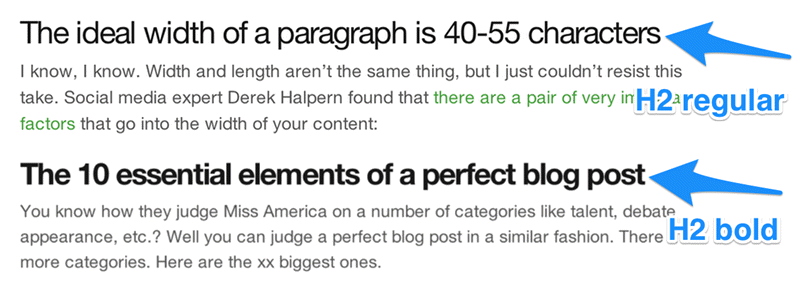
5. The Body of the Post
You will find a variety of recommendations on how to properly construct the body of the post. Some will tell you to write short articles, others long ones, or one sentence paragraphs, small chunks of information and so on.
So who do you listen to? What is the correct way?
We found the best advice at Postcron from Josefina Casas.
The Perfect Length of Your Post
Long articles are the most shared and read among online readers.
Surprised? Keep reading and she’ll explain in detail.
I- Factors that influence content length:
The excellent Neil Patel, in one of his articles, indicates that there are certain aspects that make a post valuable and distinct, and shouldn’t be sacrificed to try to meet a specific length:
i- The essence: it depends on what you want to say. If the concept and the central part of your content can be said in 100 words, then you don’t need to more than that. However, if to convey the essence and value of information, you need 2000, then, that’s o.k. too.
ii- Style: if it’s conversational and interactive, it will be longer. If it’s straightforward, obviously it’ll be shorter. Everyone uses the example of Seth Godin, as he’s a marketing genius and his blog is unlike any other, because most of his posts are only 250 words. You’ve got to define your own style. (But careful, there’s only one Seth Godin)
iii- Frequency: There are some sites that share content every day, because something short and quick to read works better for them. Others excel at delivering highly detailed and complete articles once a week, because more time is needed to read them.
iv- Structure: how an article is shaped and how the concepts are structured impacts its length, as well as its legibility and time it takes to read.
v- Purpose: every content strategy has a purpose, and every article corresponds to that purpose. For example: generate engagement, position a product, generate brand awareness, get emails, generate conversions, educate, etc… Each one has a specific nature, and this will influence the amount of words in your articles.
vi- Audience: the needs of your audience, their lifestyle, their characteristics, personality will obviously affect the length. The goal is to make content that you know your audience will read.
vii- Format: infographics, videos, presentations, are not the same as a post 100% developed with words.
What is the Ideal Number of Words for the Perfect Blog Post?
Josefina Casas continues to tell us that these facts will convince you that making your content at least 1500 words is well worth it.
Fact 1: Articles that are in the top 10 results produced by Google’s search engine have at least 2000 words. Whatever the keyword.
Let’s take a look at the following chart: (vertical: word count/ Horizontal: ranking position of results)
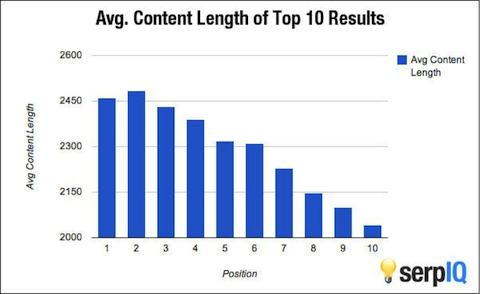
Fact 2: Semantic search (meaningful searching for content related to your keyword). These days, Google is not only focusing on tracking and identifying textual matches your keyword, but analyzing words semantically related to the search criteria too. Spiders go through your whole article, identifying synonyms and understanding the context in order to deliver results that are more meaningful for users.
That is, the more words your post has, the more versions of your keyword you can use. A greater variety means your keyword will be stronger and have more potential, which is essential for creating a rich and high valued context for the search. (= Excellent SEO optimization)
Fact 3: Indexing. The higher number of words your post has, the better it can be indexed. More indexing means better performance of your site and content in search engine results. Check out this link from the support area to learn more about Google indexing: here
Fact 4: In a small study by Neil Patel in his blog, he was able to confirm that long articles perform better than short ones. Posts with 1500 words or more get 68% more tweets and 22% more likes on Facebook than shorter ones.
Fact 5: the ideal reading time should not exceed 7 minutes, which is equivalent between 1600 and 2000 words. The curve below shows the maximum point of the reader’s attention occurs at minute 7. Then it begins to decline.
Bottom line of this point?
“There’s no exact number of words for a perfect length, but everything indicates that you shouldn’t be afraid to create detailed and lengthy content. On the contrary, it’s much better if you do” says Josefina.
6. More Tips for Perfecting the Body
Use Proper Punctuation
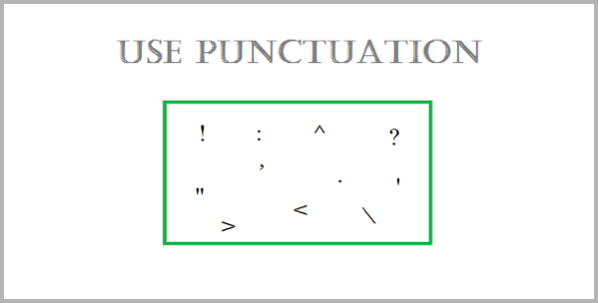
There’s nothing worse than reading a blog post that is full of errors and this goes for both spelling and punctuation. The easier of the two of course is spelling as most every editor has a spell checker. The challenge however is with punctuation.
Lucy Barret, at Jeff Bullas, says that you should, “Use full stops, commas, colons and dashes to divide the mass of words into smaller chunks of information that make sense”.
She continues…
“If you are not sure about punctuation, then keep sentences short and digestive. As you gain experience in writing, you can lengthen your sentences, and break up them by using commas. By breaking up long sentences, you can make your blog posts engaging as well as informative. Make sure to provide your readers the desired information in an easier way.”
Include Great Visuals
Have you noticed the increase in the number of images and graphics on blog posts?
There’s a reason why.
Sarah Snow says that, “We remember visuals 6 times more easily than text. Blog posts with more images attract more backlinks, which is important for SEO. Images should be beautiful, relevant and you should include information about where you got them”.
Size, relevancy, design, etc. all matter. So make sure that there is some connection between the image and text. As well, larger images that space the width of your text or close to it seem to be the trend.
Hyperlink to Relevant, Reputable Sources
Whenever citing or curating it is important that you link back to the source. This ensures that you are clearly showing that the original author is being given credit for their work.
Linking to other sites that support your argument can add value for your reader. It proves that you know what you’re talking about and gives them a place to read more about the subject. If you can link to other pages on the client’s website, all the better.
7. Always End With a Call to Action
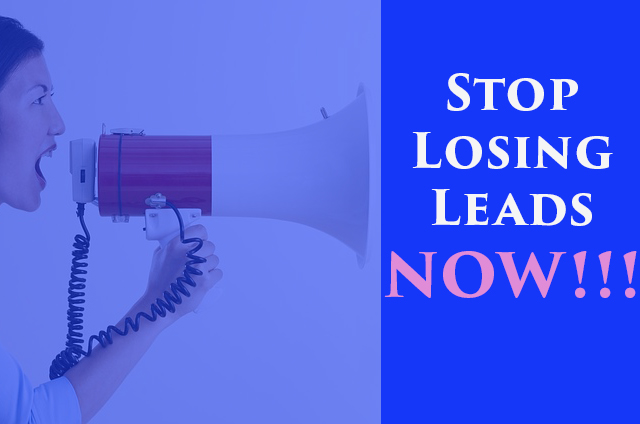
Ask yourself, “What’s the takeaway for the reader?” If you can answer that, you’ve done your job. “Encourage sharing through strong visuals, snappy data points, and a clear call to action that includes your company handles and any relevant hashtags,” says Dina Fierro, the blogger behind the well-known Eye4Style fashion and style blog.
8. Be Original
Some great closing thoughts from DailyWritingTips:
Make your post unique! Don’t simply say what everybody else is saying. Add your mark by mixing it up and making your post stand out in some way. The perfect blog post will make your audience stop and think. It will conjure some sort of emotion and make readers talk amongst themselves. A good indication that you have done your job is a post with a lot of engagement. If a post has readers commenting or arguing, you know you have given your audience something valuable to talk about.
If you found this post helpful then please share it.
